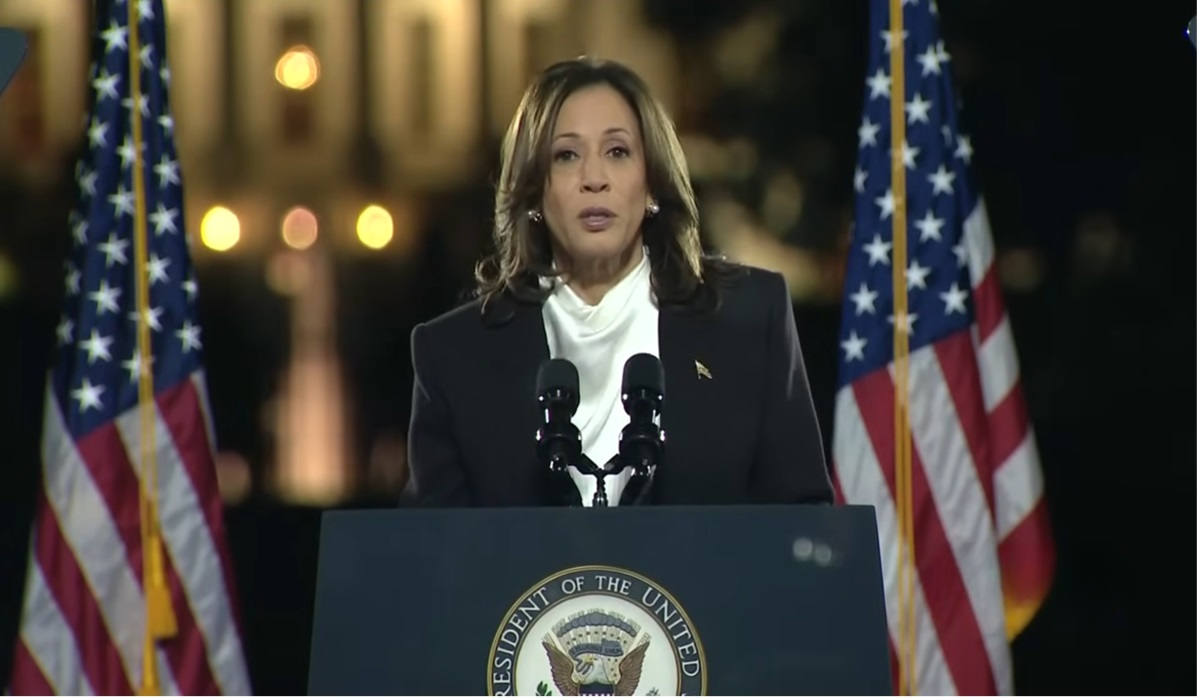How Kamala Harris Lost the Presidency: A Breakdown of the 2024 Democratic Collapse
- Xuemei Pal
- U.S.A
- November 6, 2024

Kamala Harris’s failed presidential bid will go down in history as one of the most significant rebukes of the Democratic Party in recent times, marked by a collapse in support across key demographics and a resounding rejection in pivotal battleground states. Her campaign was marred by a series of political missteps, policy choices, and alienated voting blocs, ultimately leading to a decisive victory for Donald Trump, who claimed his second term in the White House. This loss can be attributed to both Harris and Joe Biden’s controversial stances and failure to resonate with core Democratic constituencies, which Trump exploited effectively, drawing unprecedented support from across nearly every demographic.
Trump won not only in Pennsylvania, Arizona, Georgia, and Michigan—all states that Biden had claimed in 2020—but also in Nevada. He captured 276 electoral votes to Harris’s 223, a stark reversal of the 2020 election map and a clear message from the American electorate. Harris’s 47.4% of the popular vote, with 66,535,930 votes, was dwarfed by Trump’s 51%—a nearly five million vote lead, amounting to 71,595,736 votes. This decisive win reflects a stark shift in voter sentiment, one that Harris and her team failed to anticipate or counter.
A significant factor in this shift was Harris and Biden’s unwavering support for Israel, which alienated the largest Muslim Arab American voting bloc, particularly in Michigan, Pennsylvania, and Georgia. These voters, who typically support Democrats, were deeply disillusioned by the administration’s stance on Middle Eastern policy and turned out in lower numbers for Harris, contributing to her loss in these crucial states. This erosion of support wasn’t limited to Arab Americans; Harris struggled to connect with Black voters, especially Black men, a demographic that had once been a Democratic stronghold. Her inability to build a rapport with these voters drove a surprising number to Trump, who captured their support in key battlegrounds.
Young voters, including a substantial number of young Black men, flocked to Trump, disillusioned by an administration they felt was out of touch with their needs and priorities. Hispanic and Latino voters, historically Democratic supporters, also shifted their support to Trump, defying expectations. Despite Trump’s past rhetoric on immigration and racially charged remarks, Harris’s campaign failed to convince this community that she would be the better choice. Trump’s straightforward stances, even if controversial, proved more compelling to Hispanic and Latino voters, many of whom resonated with his promises on economic and social issues that the Democrats had failed to adequately address.
Economic challenges only compounded Harris’s problems. With inflation driving up the cost of essentials like food, gas, and housing, many Americans felt they were no better off than they had been four years earlier. Yet, instead of addressing these pressing concerns, Harris largely campaigned on her opposition to Trump, emphasizing her status as the “Not Trump” candidate. This strategy fell flat. Voters wanted solutions, not slogans, and were ultimately unconvinced by Harris’s assurances, which came off as hollow in the face of everyday struggles. The result was a brutal electoral backlash that underscored the importance of tangible solutions over political positioning.
In the face of this Democratic defeat, the GOP made significant gains, picking up seats in the Senate to secure a clear majority, and are just a few seats away of reclaiming the House. This political shift grants Trump and the Republican Party considerable power to enact their policies, both popular and controversial, as they lead a divided yet resurgent American government. Trump’s victory signifies a return to a more conservative agenda, one that the electorate has now definitively endorsed as they chose sweeping change over Democratic continuity.
Harris’s loss will undoubtedly serve as a landmark lesson for the Democratic Party. Her failure to galvanize support across key demographics, coupled with the administration’s perceived neglect of domestic issues, proved to be a devastating combination. The 2024 election will be remembered as a comprehensive rebuke, not only of Harris but of the Democratic approach, a clear sign that the majority of Americans desired a different path forward—one that, in their view, Trump and his party promised to deliver.








